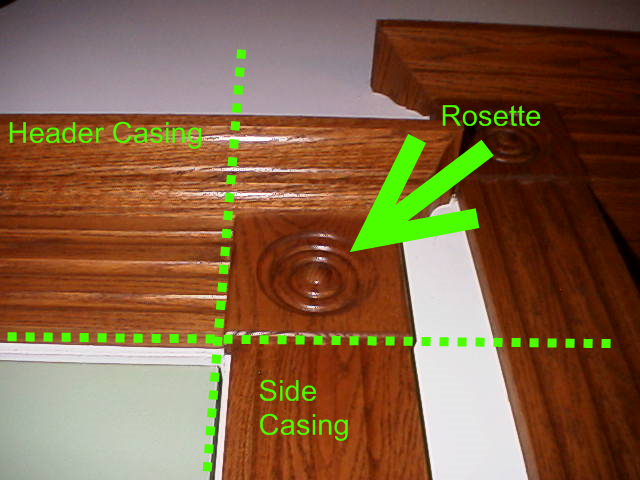Butted Door Casing Saves You From Dealing with Mitered Cuts
If you’re installing door casing (or door trim or door molding, whatever you like to call it), you probably think you’ll have to pull out the old miter saw and start making those angled cuts.
Admittedly, mitered casings are not too hard. For goodness sake, it’s just a 45 degree angle cut.
But for some reason, those mitered casings sometime go wrong. Something is out of square—the door framing, your brain, or something—and those two angles just don’t come together.
Butted door casings save you from all that. The horizontal and the vertical door casings meet at a 90 degree angle. Except, of course, there is a blank space where they are supposed to meet. Hard to describe, so look at the image above. So in that blank space you drop a corner block, or rosette. Rarely do you have any gaps with this butted door casings plus rosette design. Terminology: this isn’t really a true butted door casing—that’s another thing we cover—but it’s just what I call it.

But, yes, like anything, there are some drawbacks with the butted door casings plus rosette design:
- Those rosettes can be expensive.
- This style tends to be more classic and traditional. If you have a contemporary style house, this may not work.